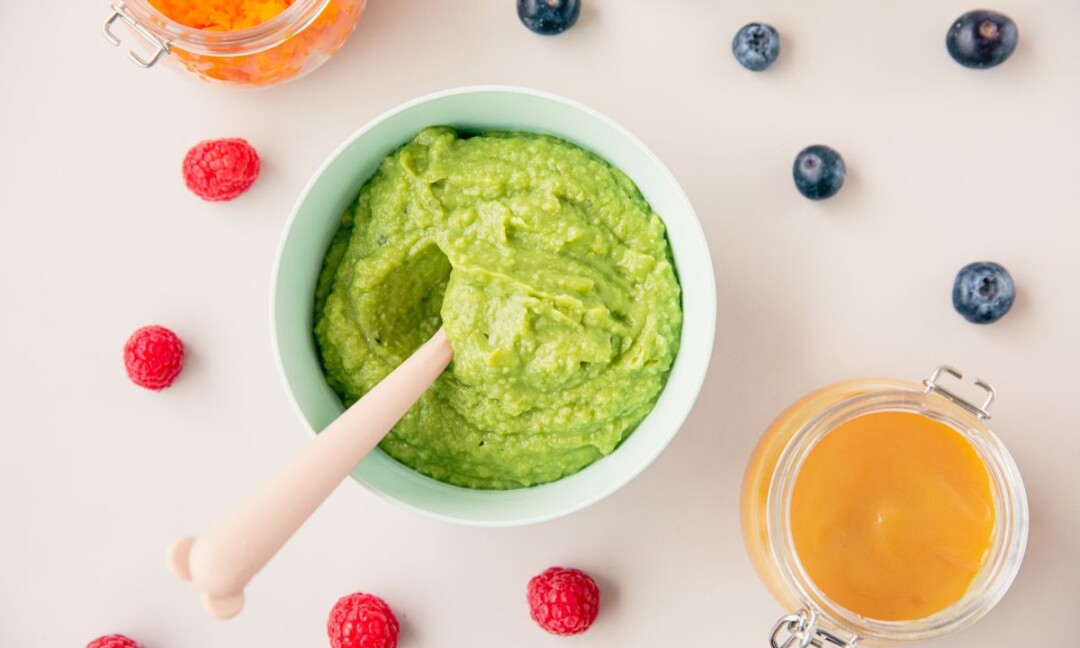
The rising juniorization of infant nutrition
The first 1,000 days of a child’s life, from the beginning of pregnancy to the age of two, are of the utmost importance. This period is crucial for the development of the child, whose body is particularly sensitive to their environment. As a result, anything positive or negative that affects a child’s diet during this period can influence their health for the rest of their life. But what about their diet afterwards? After the age of two, children continue to grow, and their specific needs differ from those of adults. It is therefore necessary to adapt a child’s diet, through a phase of diversification. To meet this need, we are witnessing a juniorization of the infant market, with products adapted to children over 18 months.
Food diversification: the starting point for the juniorization of infant nutrition
Food diversification is an important stage in a child’s development, as they learn to feed themselves more independently.[1]
There are several key stages in the evolution of an infant’s diet, as defined by the WHO. Firstly, exclusive breastfeeding is recommended until the child is 6 months old. Once this period is over, we recommend starting to diversify the baby’s diet. This takes place gradually, with the introduction of different food categories in larger quantities.
Changing nutritional needs
Although breast milk evolves over the course of breastfeeding to best meet the child’s needs, exclusive breastfeeding is no longer sufficient to cover the child’s requirements after the age of 6 months. This is because the baby’s digestive capacity and intestinal microbiota adapt and develop, enabling them to ingest more complex foods daily.[1]
What’s more, breast milk no longer provides the necessary stimuli for the baby, who is beginning to chew more solid foods. [1][2]

Infants’ needs are changing, but they still need enough dairy products. In fact, up to the age of one, babies should consume at least 500 mL of “2nd age milk” a day. After that, they should consume milk for infants, known as “growing up milk”, accompanied by pasteurized dairy products to prevent gastroenteritis. Finally, after the age of three, children should consume 3 portions of dairy products a day.
As a result, during dietary diversification, the child should eat foods with a good nutritional profile, to meet the specific needs of children over 18 months.[2]
The importance of dietary diversification
The dietary diversification phase is necessary to meet the baby’s changing nutritional needs, but not only that.[2]
Firstly, according to ANSES (French Agency for Food, Environmental and Occupational Health & Safety), this stage is necessary to reduce the risk of obesity, infections and food allergies.[1]
Secondly, it enables the child to gradually become accustomed to adult food: from 8 months onwards, children discover new tastes and textures. They gradually move on from blended foods, to crushed foods, then to foods in small pieces.[2]
Therefore, juniorization is an approach that aims to accompany dietary diversification up to the child’s 3rd birthday. Aware that children still have specific needs after the age of 18 months, infant nutrition players are innovating and now offer adapted products.
The juniorization of infant nutrition: a way to ensure the healthy development of children
The juniorization of infant nutrition means offering products that are similar to adult foods but adapted to children over 18 months.

The juniorization of infant nutrition: the necessity of adapted products
One of the challenges facing the infant food industry is to develop products that are adapted to children undergoing dietary diversification. Careful attention must be paid to the foods and quantities introduced, to avoid both deficiencies and excesses.[1]
Children need precise quantities of high-quality nutrients: in particular, amino acids, lactose and milk fat.
First of all, if the food given to babies does not provide the 9 essential amino acids, certain proteins cannot be synthesized. In contrast, if too many amino acids are ingested, then the excess is oxidized through a detoxification process, which can have harmful long-term consequences.
In addition, the child needs lactose, the preferred source of glucose. In fact, its impact on blood glucose levels is lower than that of glucose, sucrose or maltodextrin. In addition, lactose increases the absorption of other minerals, and is a prebiotic that plays a key role in the development of the intestinal microbiota.[2]
Finally, as in adults, fatty acids account for a significant proportion of young children’s total energy intake. Whether of animal or vegetable origin, saturated or unsaturated, long-chain or short-chain, each has a specific and essential role to play. In fact, fatty acids play a key role in the development of the hormonal system, brain maturity and vision. As a result, fat sources and compositions should be varied.[1]
However, certain foods should be avoided: [2] those of low nutritional value or containing contaminants, those containing caffeine or soy, and those posing an infectious risk.
It is therefore essential to provide young children with suitable products, with good nutritional profiles and adapted textures, as proposed by the juniorization of infant nutrition.
Parents and the challenges of infant nutrition
First of all, we need to take into account the fact that not all parents are educated on the subject of nutrition. Parents need to know how to adapt the quality and quantity of the nutrients their children ingest as they grow. There is therefore a demand and a need for parents to be supported by players in the infant market.
What’s more, some parents lack the time to prepare a meal specifically for their child. Juniorization therefore also responds to a demand for practicality.
Finally, juniorization also means gradually moving towards quality dishes eaten by adults. Parents are the ones who buy for their babies, and they are generally more demanding in their purchasing choices than they are for the products they will consume themselves.
Brand initiatives to meet parent demand
In response to this demand, the infant nutrition market is evolving. In order to support parents, infant food brands are adapting their ranges and extending their offer of nutritionally adapted foods for children up to 3 years of age.[1]
Their offer is made up of more gourmet and textured products, with ingredients that stimulate the senses. The aim is to help awaken babies and facilitate the feeding of young children.

Including dairy ingredients in junior products
As we saw earlier, after 6 months, children still need dairy ingredients in their diet. It is therefore essential that foods intended for them contain sufficient quantities of protein, lactose and milk fat. Products developed for children must therefore be adapted, or even enriched, with a good nutritional profile, to avoid deficiencies and guarantee the child’s healthy growth.
Lactalis Ingredients has developed a complete range of ingredients adapted to the specific needs of young children, for inclusion in infant formulas. All these ingredients are of high bacteriological and nutritional quality, guaranteeing the safety, health and well-being of the child. The range includes Prolacta®, a soluble protein with high consistency and an excellent amino acid profile, Laktodem® demineralized sweet whey, which can be used in 1st, 2nd and 3rd age formulas, and lactose powders, available with or without vitamin B2.
Any question ? Contact-us !
Sources:
[1] L’Assurance maladie, La diversification alimentaire, 2021
[2] L’Assurance maladie, de 8 mois à 3 ans : des repas équilibrés et bien répartis, 2021
[3] R Uauy, Essential fatty acids in visual and brain development, Sept 2021
[4] Alliance 7, aliments de l’enfance, 2022















